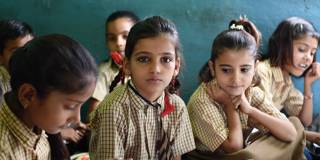Getting girls into classrooms remains hugely important in some of the world’s poorest countries, and it can be achieved with targeted measures, say, to make their daily commute safer. But balanced school enrollment numbers are only the beginning. There is also a need to address the underlying causes of unequal educational outcomes.
PARIS – Recent decades have brought significant progress toward a more just and equal world in areas such as poverty reduction, immunization, and life expectancy. But in some areas, change has been painfully slow. In one such area – gender equality in education – the problem is as straightforward as it is profound: we are focusing on the wrong metric.
Of course, there is good news. As the UNESCO Global Education Monitoring (GEM) 2019 Gender Report notes, the number of adult illiterate women in upper-middle-income countries fell by 42 million from 2000 to 2016. And progress on enrollment in most countries means that richer countries increasingly face the opposite challenge, as more boys than girls do not complete secondary education.
These disparities expose the limitations of the current approach, which focuses on gender parity – that is, ensuring that equal numbers of boys and girls attend school. Of course, getting girls into classrooms remains hugely important in some of the world’s poorest countries, and it can be achieved with targeted measures, say, to make their daily commute safer. Among the 20 countries with the largest such disparities, Guinea, Niger, and Somalia stand out for their commitment to closing the gap.

PARIS – Recent decades have brought significant progress toward a more just and equal world in areas such as poverty reduction, immunization, and life expectancy. But in some areas, change has been painfully slow. In one such area – gender equality in education – the problem is as straightforward as it is profound: we are focusing on the wrong metric.
Of course, there is good news. As the UNESCO Global Education Monitoring (GEM) 2019 Gender Report notes, the number of adult illiterate women in upper-middle-income countries fell by 42 million from 2000 to 2016. And progress on enrollment in most countries means that richer countries increasingly face the opposite challenge, as more boys than girls do not complete secondary education.
These disparities expose the limitations of the current approach, which focuses on gender parity – that is, ensuring that equal numbers of boys and girls attend school. Of course, getting girls into classrooms remains hugely important in some of the world’s poorest countries, and it can be achieved with targeted measures, say, to make their daily commute safer. Among the 20 countries with the largest such disparities, Guinea, Niger, and Somalia stand out for their commitment to closing the gap.